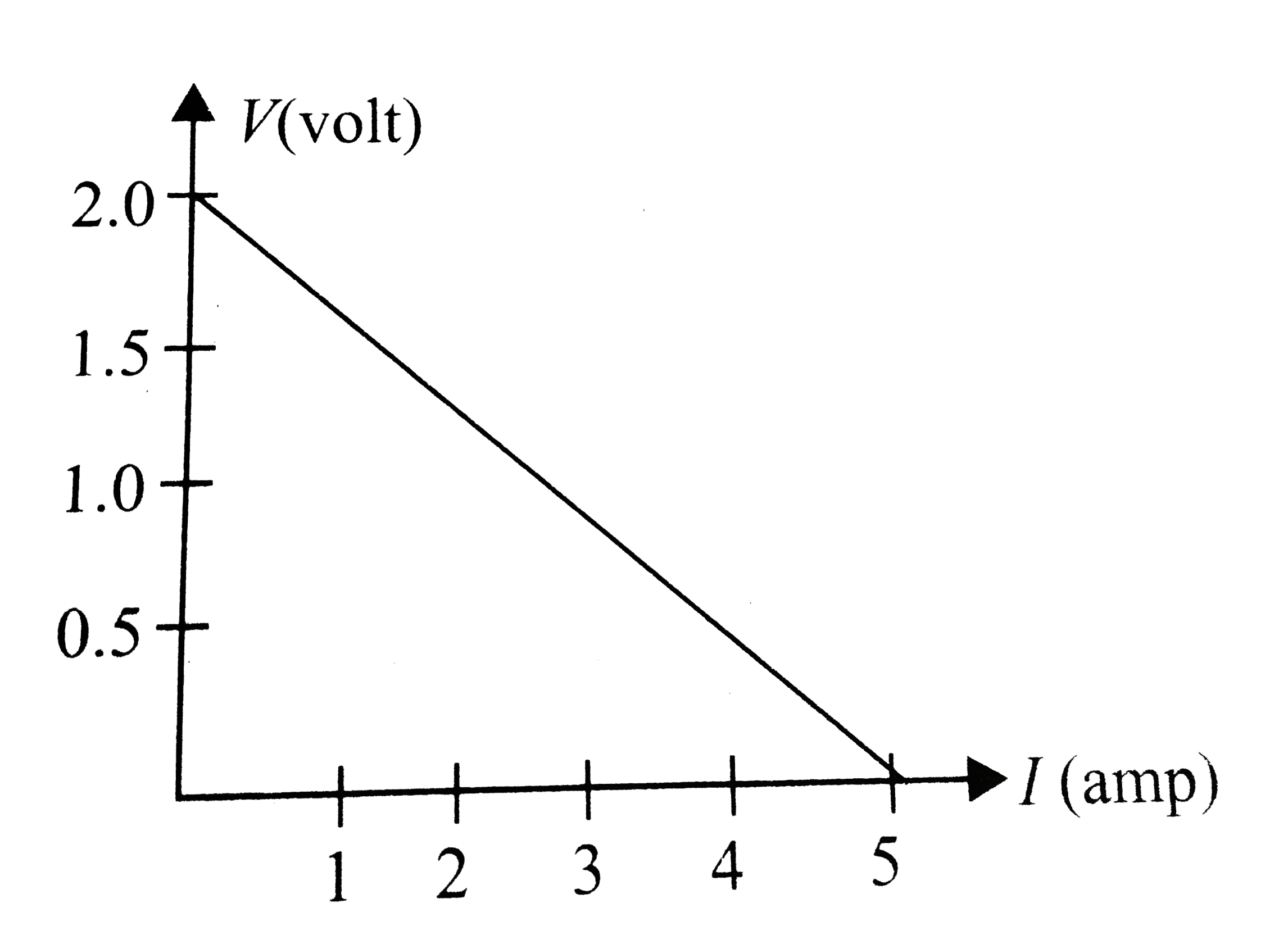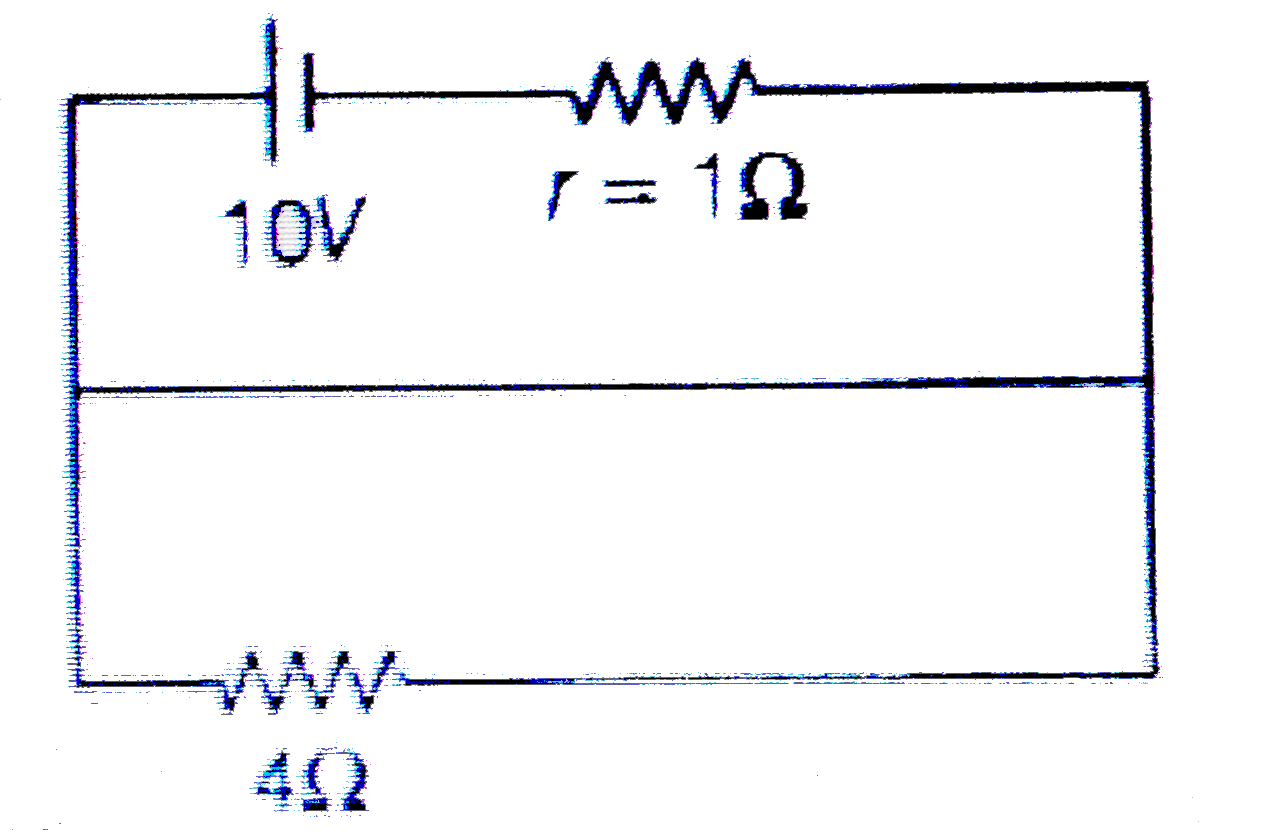The potential difference across the terminals of the cell in open circuit is called as
current
pot. diff. of cell
e.m.f. of cell
resistance
The correct Answer is:C
To solve the question, "The potential difference across the terminals of the cell in open circuit is called as," we can follow these steps:
1. Understanding Open Circuit:
- An open circuit is a circuit where the current does not flow because the circuit is not complete. This means that there is a break in the circuit.
2. Identifying Terms:
- In the context of a cell, we have several important terms:
- E: Electromotive Force (EMF) of the cell.
- V: Potential difference across the terminals of the cell.
- I: Current flowing through the circuit.
- r: Internal resistance of the cell.
3. Applying the Formula:
- The relationship between these terms can be expressed with the formula:
E−V=I⋅r
- In an open circuit, the current I is equal to zero because there is no complete path for the current to flow.
4. Substituting Values:
- Since I=0 in an open circuit, we can substitute this into the formula:
E−V=0⋅r
- This simplifies to:
E−V=0
5. Conclusion:
- From the above equation, we can conclude that:
E=V
- Therefore, the potential difference across the terminals of the cell in an open circuit is equal to the EMF of the cell.
6. Final Answer:
- The potential difference across the terminals of the cell in an open circuit is called Electromotive Force (EMF).
- An open circuit is a circuit where the current does not flow because the circuit is not complete. This means that there is a break in the circuit.
- In the context of a cell, we have several important terms:
- E: Electromotive Force (EMF) of the cell.
- V: Potential difference across the terminals of the cell.
- I: Current flowing through the circuit.
- r: Internal resistance of the cell.
- The relationship between these terms can be expressed with the formula:
E−V=I⋅r
- In an open circuit, the current I is equal to zero because there is no complete path for the current to flow.
- Since I=0 in an open circuit, we can substitute this into the formula:
E−V=0⋅r
- This simplifies to:
E−V=0
- From the above equation, we can conclude that:
E=V
- Therefore, the potential difference across the terminals of the cell in an open circuit is equal to the EMF of the cell.
- The potential difference across the terminals of the cell in an open circuit is called Electromotive Force (EMF).
Topper's Solved these Questions
- CURRENT ELECTRICITYBook:NIKITA PUBLICATIONChapter:CURRENT ELECTRICITYExercise:Multiple Choice Questions
Explore 314 Videos
- COMMUNICATION SYSTEMSBook:NIKITA PUBLICATIONChapter:COMMUNICATION SYSTEMSExercise:Multiple Choice Questions (Examples for Practice)
Explore 8 Videos
- ELASTICITYBook:NIKITA PUBLICATIONChapter:ELASTICITYExercise:MCQ
Explore 314 Videos
Similar Questions
Knowledge Check
The potential difference betwee11 the terminals of a cell in an open circuit is 2.2 V. When a resistor of 5Ω is connected across the terminals of the cell, the potential difference between the terminals of the cell is found to be 1.8 V. The internal resistance of the cell is
A712ΩB109ΩC910ΩD127ΩFor a cell, a graph is plotted between the potential difference V across the terminals of the cell and the current I drawn the cell. The emf and the internal resistance of the cell are E and r, respectively. Then
 AE=2V,r=0.5ΩBE=2V,r=0.4ΩCE>2V,r=0.5ΩDE>2V,r=0.4Ω
AE=2V,r=0.5ΩBE=2V,r=0.4ΩCE>2V,r=0.5ΩDE>2V,r=0.4ΩFor a cell, the graph between the potential difference (V) across the terminals of the cells and the current I drawn from the cell is as shown in figure. Calculate the e.m.f. and the internal resistance of the cell.
 A4F3KB3F4KC4FKD2FK
A4F3KB3F4KC4FKD2FK
The potential difference across the terminals of a cell is 1.5 volt.It is connected with a resistance of 30ohms. Calculate the current flowing through the circuit.
View SolutionPotential difference across the terminals of a cell is always less than its emf.
View SolutionPotential different across the terminals of the battery shown in figure is

View SolutionIn the circuit E,F,G,Hare cell of emf 2,1,3and 1Ω respectively .The potential difference across the terminal of each of the cell G and H are

View SolutionPotential difference across the terminal of a non ideal battery is
View Solution